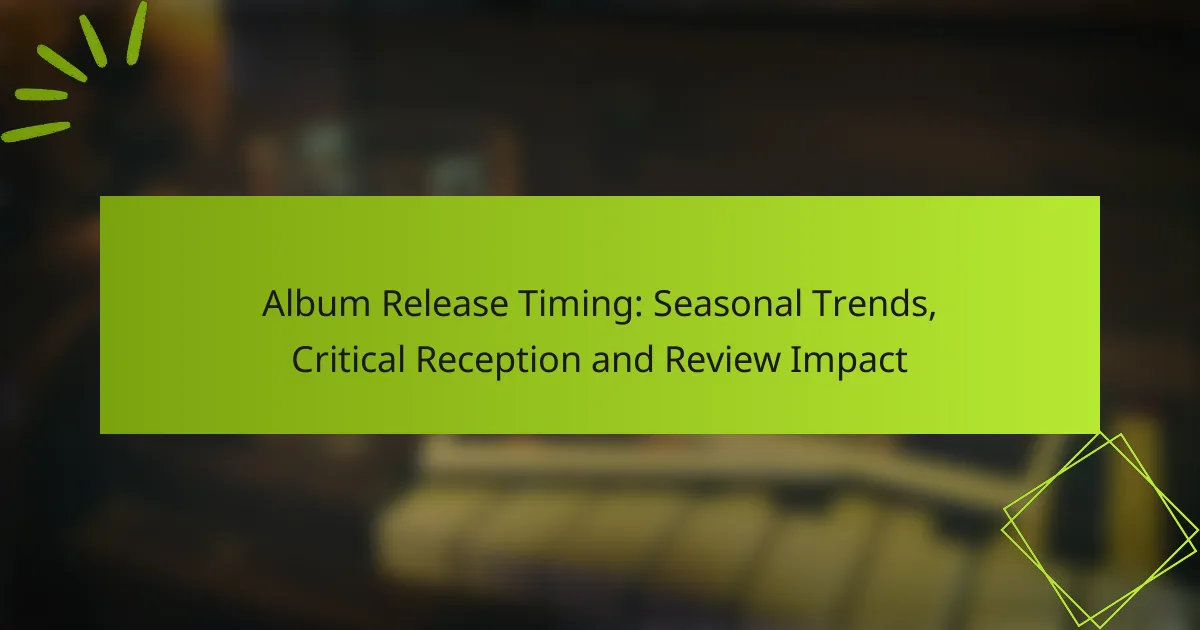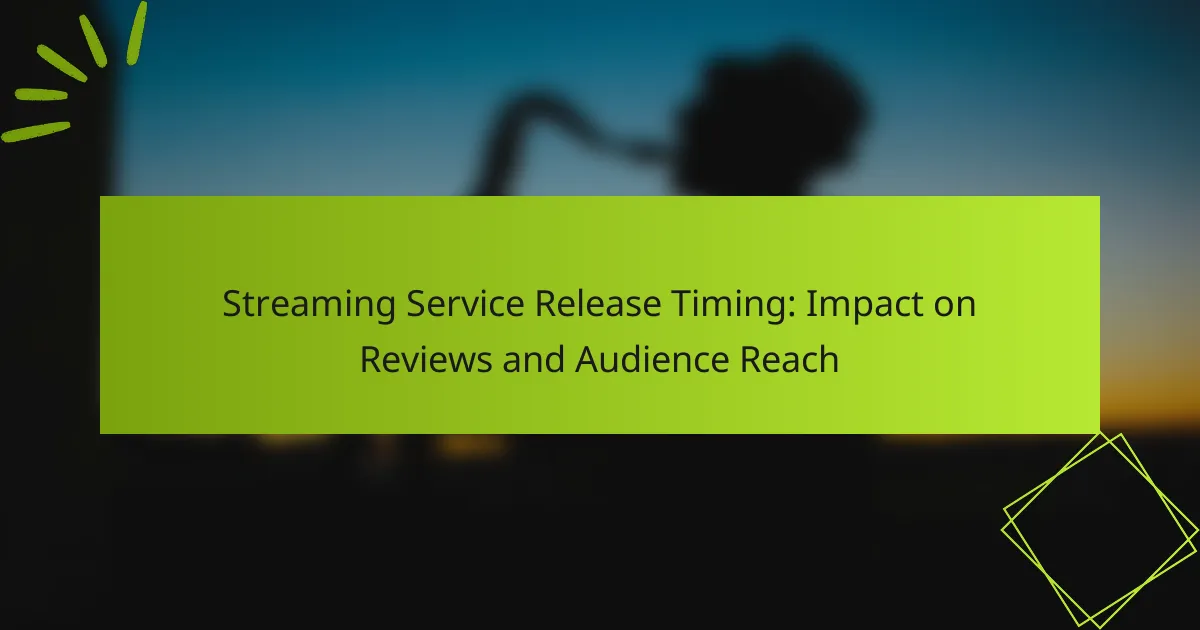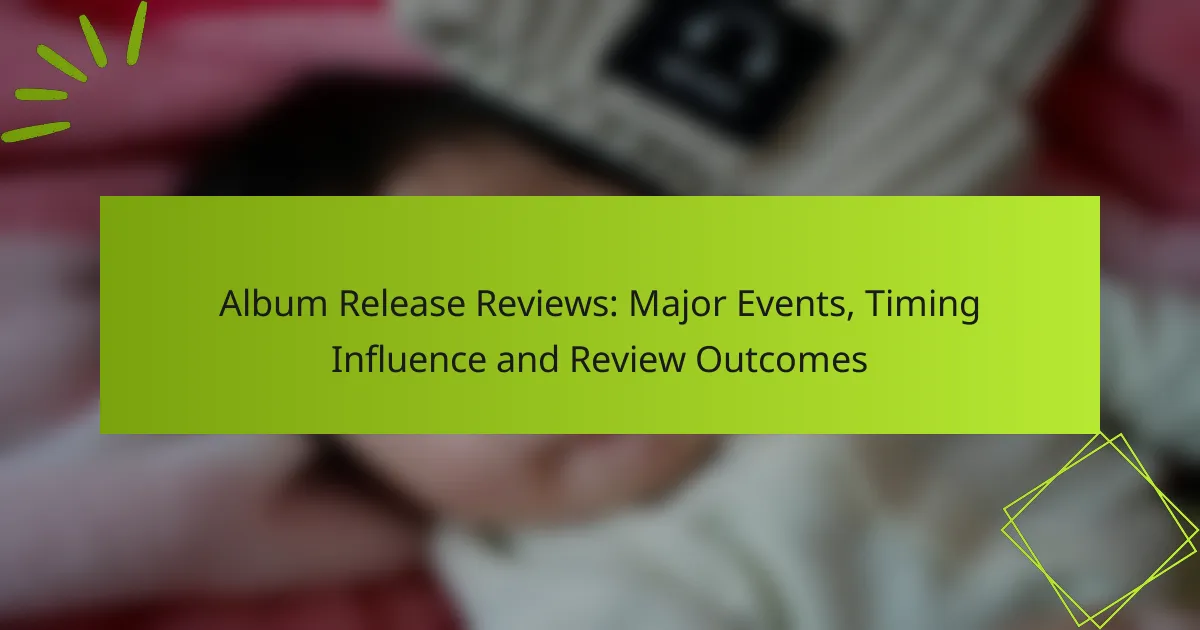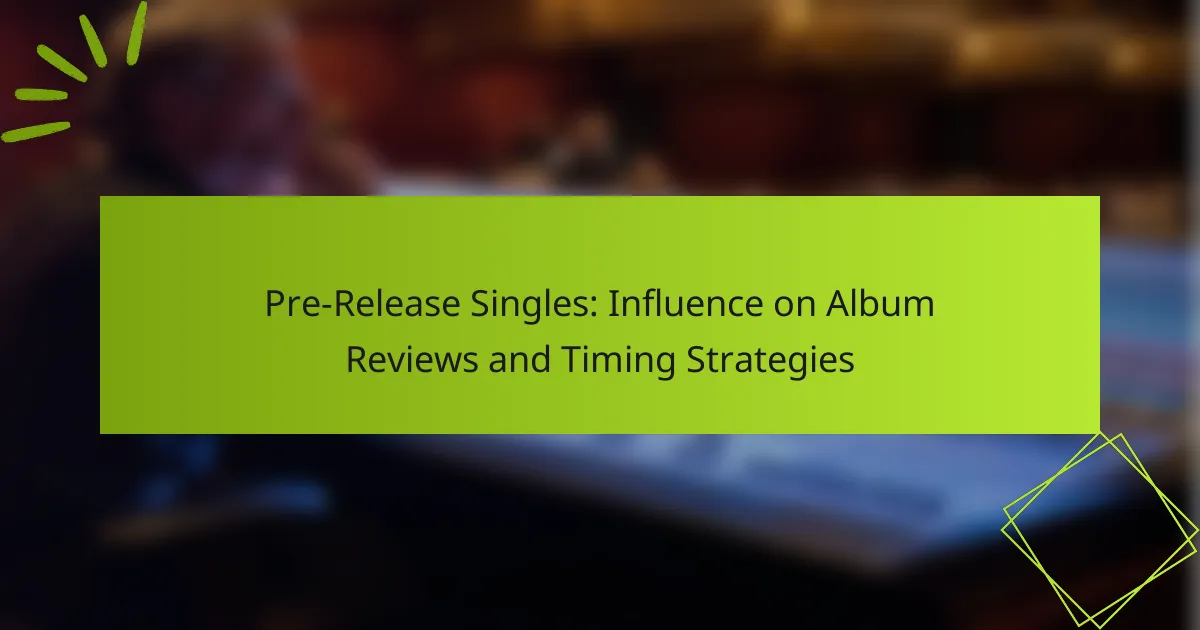The timing of an album’s release is crucial, as it often aligns with seasonal trends that can enhance its exposure and sales potential. Different seasons offer unique advantages, and understanding consumer behavior during these periods can help artists and labels optimize their release strategies. Additionally, critical reception plays a significant role in shaping public perception, with positive reviews boosting visibility and sales, while negative feedback can adversely affect an album’s success.
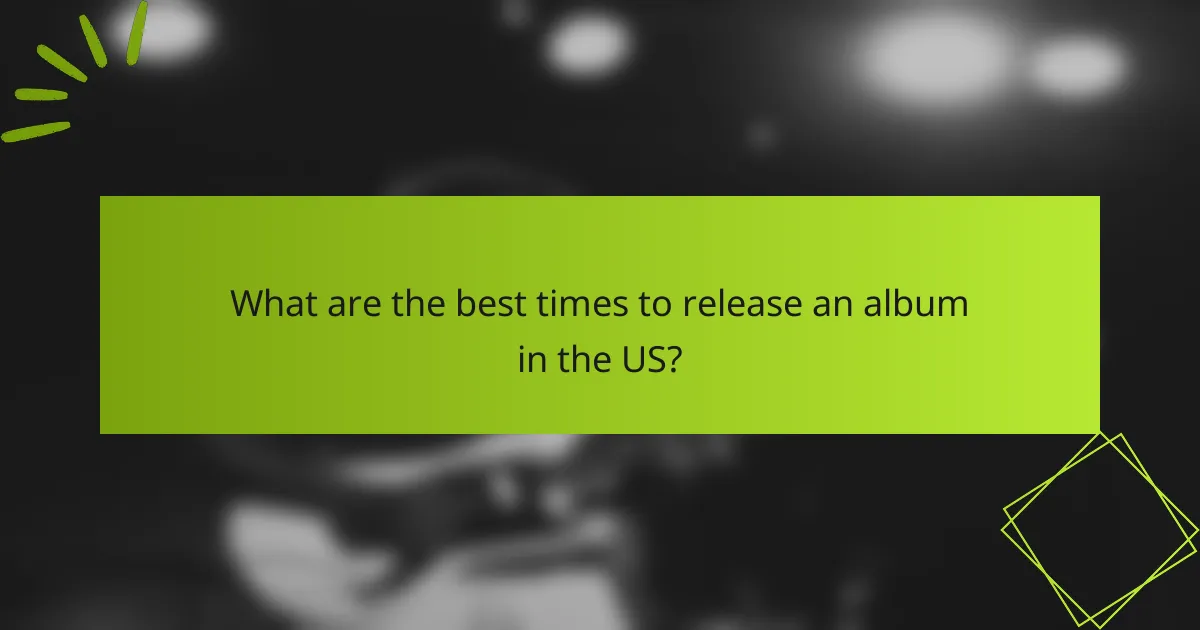
What are the best times to release an album in the US?
The best times to release an album in the US typically align with seasonal trends that maximize exposure and sales. Spring, summer, and fall each offer unique advantages that can enhance an album’s reception and commercial success.
Spring releases for festival exposure
Releasing an album in spring can be advantageous due to the numerous music festivals that occur during this season. Artists can leverage these events to gain visibility and connect with fans, as festivals often feature a diverse lineup and attract large crowds.
Consider timing your release to coincide with major festivals like Coachella or Bonnaroo. This strategy can create buzz and increase streaming numbers, as festival-goers often seek new music to enjoy during the events.
Fall releases for holiday sales
Fall is an optimal time for album releases aimed at capturing holiday sales. With the holiday shopping season approaching, many consumers are looking for gifts, making it a prime opportunity for artists to capitalize on increased spending.
Albums released in late September to early November can benefit from holiday promotions and gift-giving trends. Artists should consider bundling merchandise with album sales to entice buyers during this lucrative period.
Summer releases for touring opportunities
Summer is ideal for album releases that coincide with touring schedules. Many artists plan extensive tours during the warmer months, and a new album can serve as a focal point for live performances, driving ticket sales and merchandise revenue.
Releasing an album in late spring or early summer allows for promotional tours that can enhance visibility and fan engagement. Artists should ensure that their marketing efforts align with tour dates to maximize impact and reach.
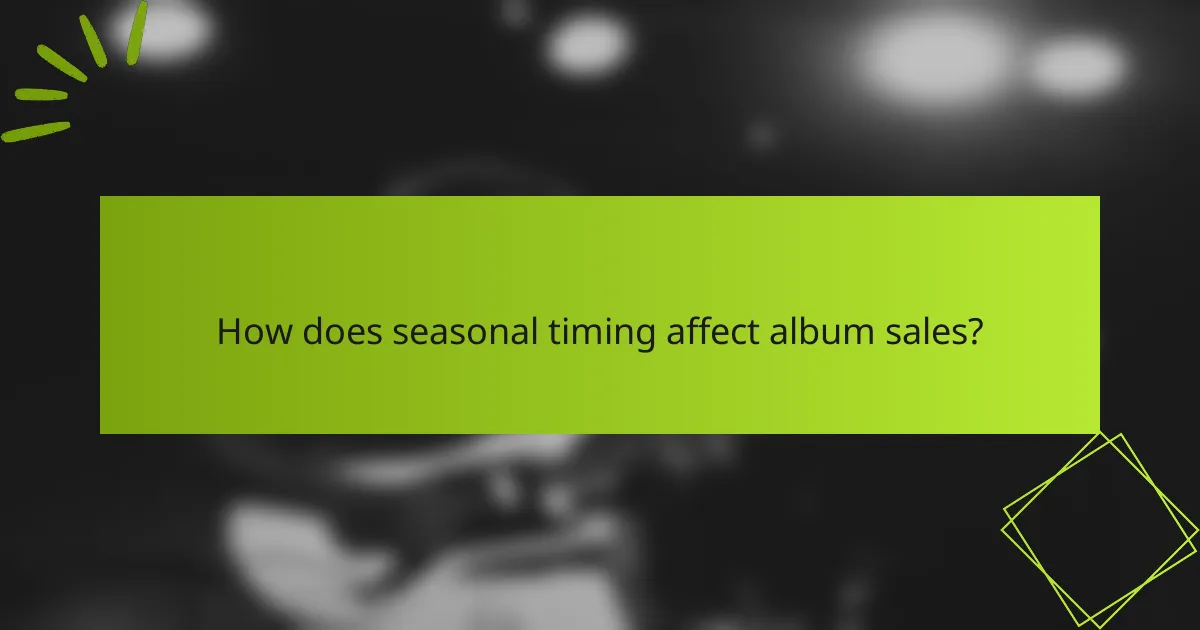
How does seasonal timing affect album sales?
Seasonal timing significantly influences album sales, with certain periods yielding higher sales due to consumer behavior and marketing strategies. Understanding these trends can help artists and labels optimize release schedules for maximum impact.
Increased sales during holiday seasons
Holiday seasons, particularly around Christmas and New Year, often see a spike in album sales. This is largely due to gift-giving trends, where music albums become popular presents, leading to increased demand.
To capitalize on this, artists should consider releasing albums in late October to early December. This timing allows for promotional campaigns that align with holiday shopping, potentially boosting visibility and sales significantly.
Impact of summer festivals on visibility
Summer festivals play a crucial role in enhancing album visibility, as many artists perform at these events, attracting large audiences. A well-timed album release before a major festival can create buzz and drive sales as fans seek to purchase music from artists they enjoy live.
Artists should aim to release new albums in late spring or early summer, allowing for promotional performances at festivals. This strategy not only increases exposure but also leverages the festival atmosphere to create a memorable experience that can translate into higher sales.
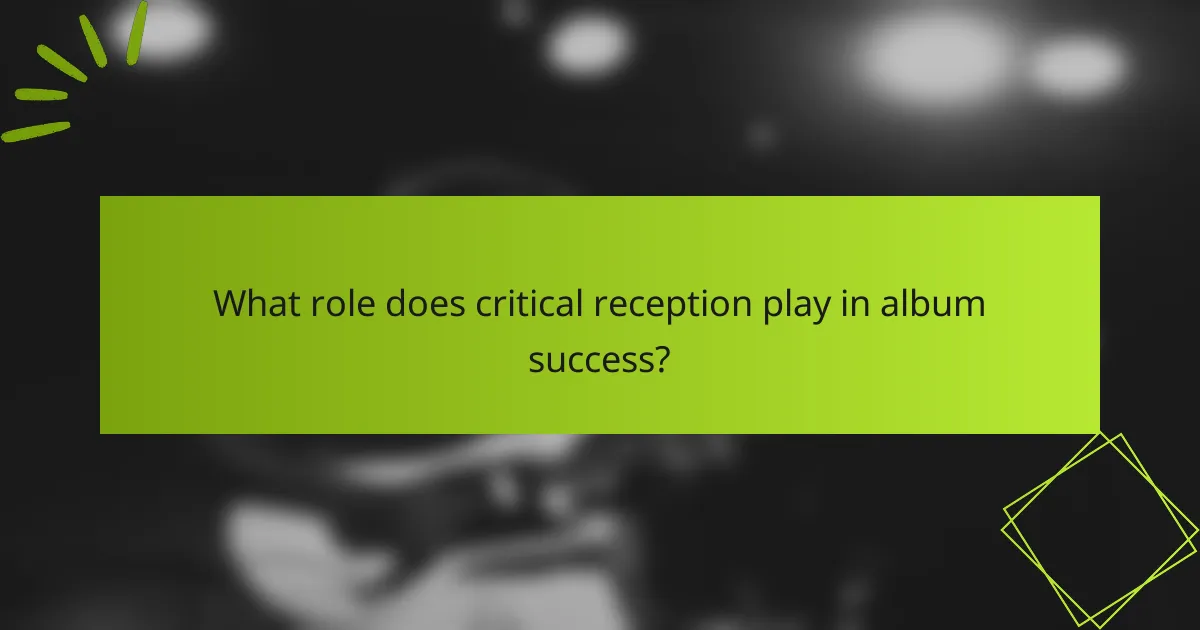
What role does critical reception play in album success?
Critical reception significantly influences an album’s success by shaping public perception and driving sales. Positive reviews can enhance visibility and credibility, while negative feedback may hinder an album’s performance in the market.
Influence of early reviews on sales
Early reviews can create a buzz around an album, often translating into increased sales. Albums that receive favorable critiques shortly after release tend to see a spike in purchases, particularly in the first week, which is crucial for chart performance.
For example, albums that score high on platforms like Metacritic often experience a sales boost of 20-30% compared to those with mixed or negative reviews. This highlights the importance of timing in the release strategy, as aligning with positive critical reception can maximize initial sales.
Impact of critic ratings on streaming numbers
Critic ratings can significantly affect streaming numbers, as higher scores often lead to increased playlist placements on services like Spotify and Apple Music. These placements can result in a substantial rise in streams, sometimes exceeding 50% for albums that receive high praise.
Moreover, albums that are critically acclaimed are more likely to be featured in promotional campaigns, further enhancing their visibility. Artists should aim to secure early reviews from reputable sources to leverage this impact on streaming performance effectively.

How do album reviews affect consumer behavior?
Album reviews significantly influence consumer behavior by shaping perceptions and driving purchasing decisions. Positive or negative critiques can lead to increased sales or deter potential buyers, making reviews a critical factor in the music industry.
Positive reviews drive higher sales
When an album receives positive reviews, it often results in a noticeable uptick in sales. Consumers tend to trust the opinions of critics, especially when they highlight standout tracks or innovative production. This trust can translate into higher streaming numbers and physical album purchases.
For instance, an album praised for its lyrical depth and musicality may see sales increase by tens of percent shortly after its release. Fans often seek out albums that have been recommended by trusted sources, making reviews a powerful marketing tool.
Negative reviews can deter purchases
Conversely, negative reviews can significantly hinder album sales. If critics point out flaws in the music, such as lackluster songwriting or poor production quality, potential buyers may be discouraged from making a purchase. This is particularly true in a competitive market where consumers have many options.
For example, an album that receives consistent criticism may experience a drop in sales, sometimes by a similar percentage as those seen in positive cases. Artists and labels must be mindful of how reviews can shape public perception and adjust their marketing strategies accordingly.
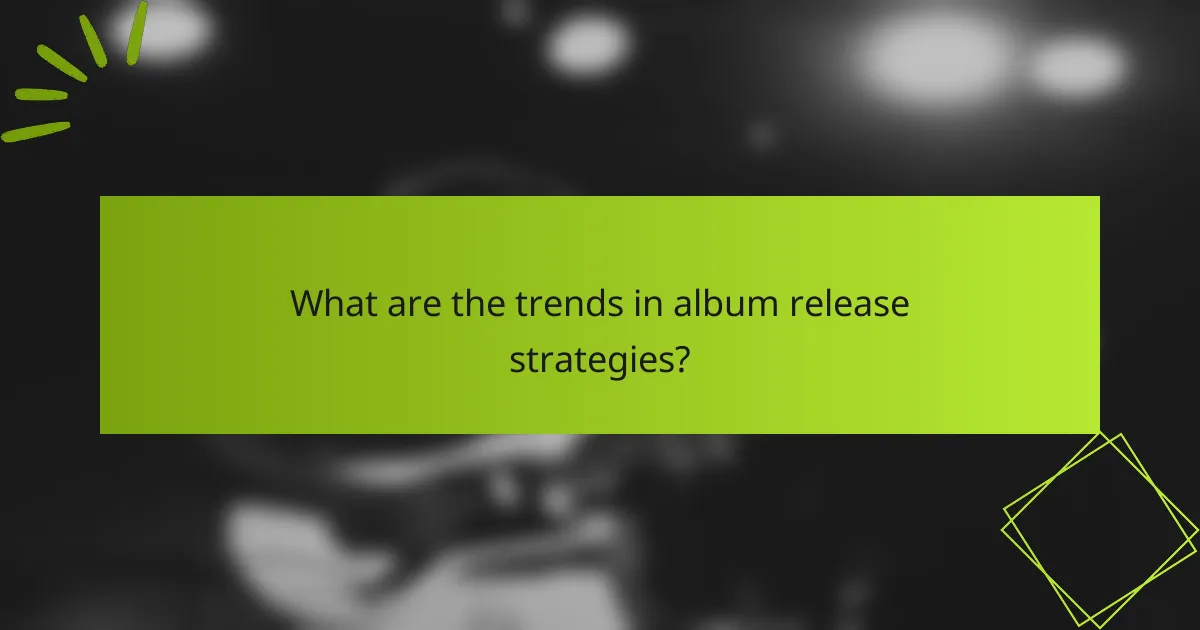
What are the trends in album release strategies?
Album release strategies are evolving, with artists increasingly favoring digital-first approaches and surprise releases to capture audience attention. These trends reflect changes in consumer behavior and the music industry’s adaptation to digital platforms.
Digital-first releases gaining traction
Digital-first releases prioritize online platforms for album launches, allowing artists to reach global audiences instantly. This strategy often includes streaming services, social media promotions, and digital downloads, which can lead to higher initial engagement.
Many artists are now opting to release albums exclusively on platforms like Spotify or Apple Music before considering physical formats. This approach can reduce production costs and allow for quicker adjustments based on listener feedback.
Surprise releases creating buzz
Surprise album releases generate significant excitement and media coverage, often leading to increased sales and streaming numbers. By announcing an album just hours or days before its release, artists can create a sense of urgency and exclusivity.
Notable examples include Beyoncé’s self-titled album and Taylor Swift’s “Folklore,” both of which dropped without prior promotion. This tactic can be highly effective, but it requires careful planning to ensure that marketing efforts are still impactful despite the short notice.
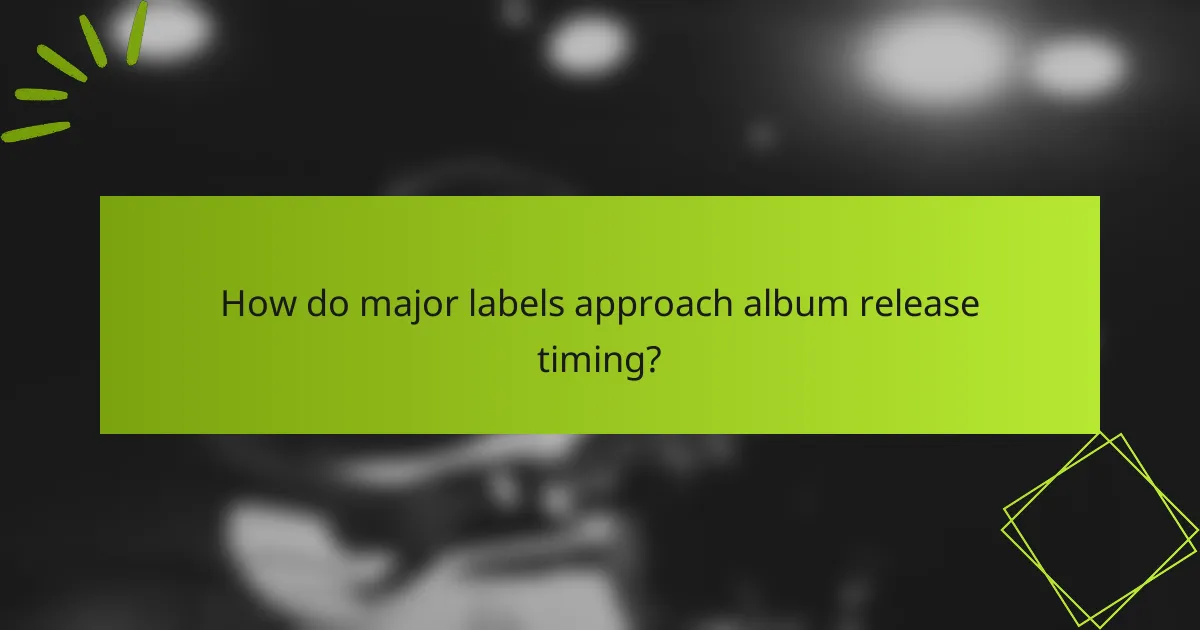
How do major labels approach album release timing?
Major labels strategically plan album release timing to maximize exposure and sales. This involves analyzing market trends, seasonal patterns, and critical reception to optimize the impact of new music.
Data-driven release schedules
Labels utilize data analytics to determine the best times for album releases. They examine historical sales data, streaming trends, and social media engagement to identify peak periods when audiences are most receptive.
For instance, many artists release albums in the fall or spring, aligning with key shopping seasons and award cycles. This timing can significantly influence initial sales and chart performance.
Marketing campaigns aligned with seasonal trends
Marketing strategies are often tailored to seasonal trends to enhance visibility. For example, summer releases may focus on upbeat tracks suitable for festivals and vacations, while holiday releases often feature themes of celebration and nostalgia.
Labels may also coordinate promotional activities, such as music videos and social media campaigns, to coincide with seasonal events. This alignment helps create a cohesive narrative around the album, increasing its chances of success.

What are the emerging trends in album releases?
Emerging trends in album releases indicate a shift towards strategic timing and enhanced engagement strategies. Artists are increasingly considering seasonal patterns and social media dynamics to maximize visibility and critical reception.
Increased focus on social media engagement
Social media has become a crucial platform for album promotion, allowing artists to connect directly with their audience. Engaging content, such as behind-the-scenes footage, teasers, and interactive posts, can significantly boost anticipation and fan involvement.
Platforms like Instagram, TikTok, and Twitter are essential for real-time updates and fan interaction. Artists often use these channels to share snippets of their work, conduct live Q&A sessions, or even collaborate with influencers to broaden their reach.
To effectively leverage social media, artists should develop a content calendar that aligns with their album release timeline. Regular updates, engaging visuals, and fan-driven content can create a buzz that translates into higher streaming numbers and sales upon release.
